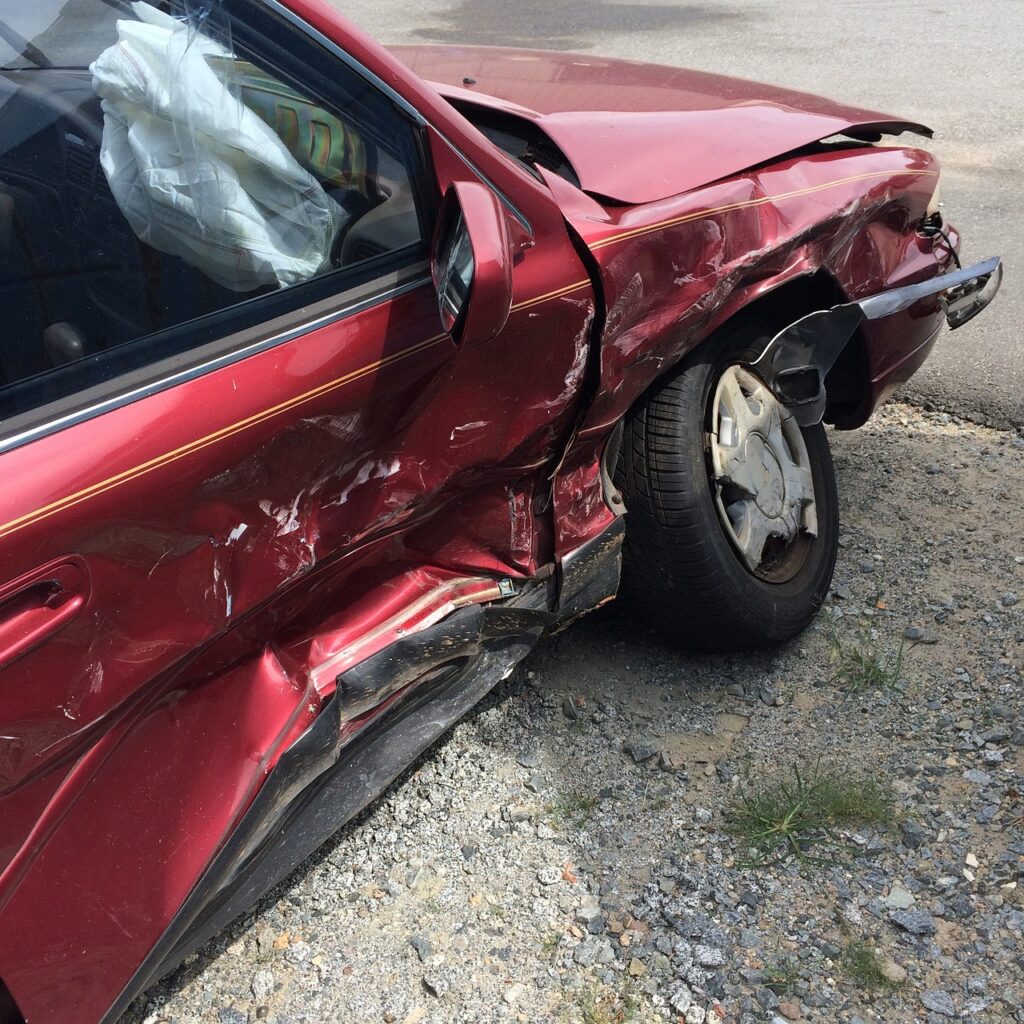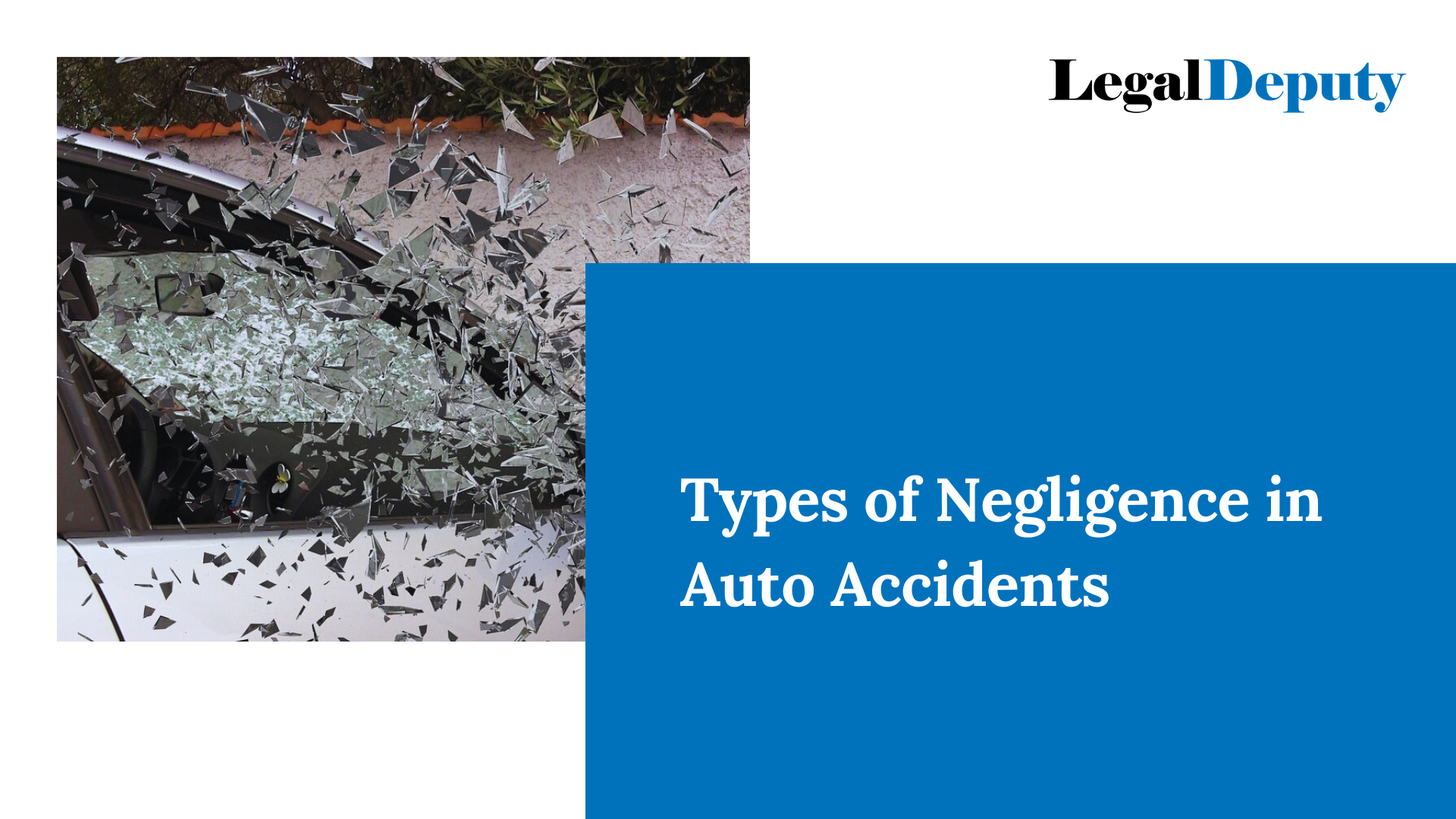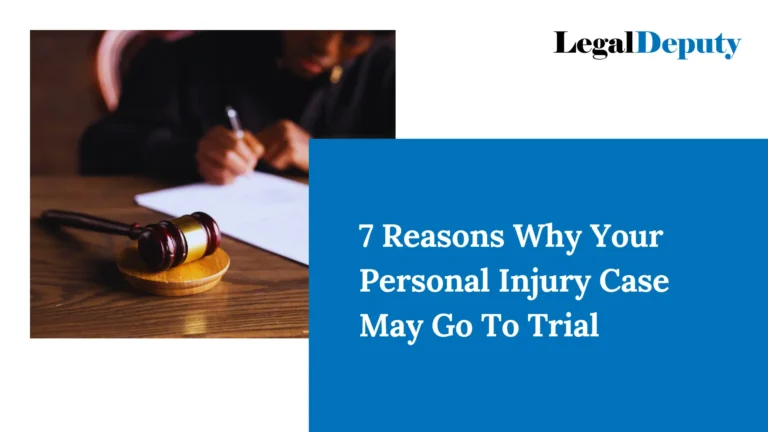5 Types of Negligence in Auto Accidents – An Ultimate Guide
When you’re involved in an auto accident, understanding the concept of negligence is crucial, especially if you plan to pursue a personal injury claim. Negligence is a legal theory that forms the foundation of many personal injury cases.
In simple terms, it refers to the failure to exercise the care that a reasonably prudent person would in a similar situation. When it comes to auto accidents, identifying who was negligent—and to what extent—can significantly impact the outcome of a claim.

In this blog, we’ll explore the different types of negligence that commonly arise in auto accidents. We’ll also provide some general statistics about accidents, debunk common myths, offer tips on what to do if you’re involved in an accident, and answer frequently asked questions about personal injury cases.
Types of Negligence in Auto Accidents
1. Comparative Negligence
Comparative negligence is a legal doctrine used in many states where both parties involved in an accident may share some degree of fault. In such cases, each party’s level of responsibility is assessed, and compensation is adjusted accordingly. For instance, if you are found to be 20% at fault for an accident, your compensation may be reduced by that percentage.
2. Contributory Negligence
Contributory negligence is stricter than comparative negligence. In states that follow this rule, if you are found even slightly responsible for the accident, you may be barred from recovering any compensation. Even if you were only 1% at fault, you might not be eligible for any damages.
3. Gross Negligence
Gross negligence occurs when a driver’s actions are not just careless but reckless to a severe degree. This form of negligence goes beyond simple carelessness and involves a blatant disregard for the safety of others. Examples include driving under the influence or excessively speeding in a school zone. Victims of gross negligence often have stronger cases for punitive damages.
4. Vicarious Liability
Vicarious liability comes into play when a third party is held responsible for the negligent actions of someone else. In auto accidents, this often applies to employers who may be liable if their employee causes an accident while driving a company vehicle. It can also apply to parents who may be held liable for accidents caused by their minor children.
5. No-Fault Negligence
In no-fault states, your own insurance company covers your medical expenses and other losses, regardless of who was at fault for the accident. While this simplifies the claims process, it can also limit your ability to sue the other party unless your injuries meet a certain threshold.
Want a Free Consultation?
General Statistics about Auto Accidents
- According to the National Highway Traffic Safety Administration (NHTSA), approximately 38,000 people die in motor vehicle crashes in the United States each year.
- Distracted driving is a leading cause of accidents, responsible for 9% of all fatal crashes.
- Alcohol-impaired driving contributes to 28% of all traffic-related deaths in the U.S.
- Speeding is a factor in 26% of all traffic fatalities, emphasizing the danger of reckless driving.
These statistics highlight the common causes of accidents, underscoring the importance of understanding different types of negligence.

Common Myths about Negligence in Auto Accidents
Myth 1: Rear-end collisions are always the fault of the driver behind.
While the trailing driver is often presumed at fault, there are exceptions. For instance, if the lead driver suddenly reverses or stops without warning, they may be held partially or fully responsible.
Myth 2: You can’t be held responsible if you didn’t intend to cause harm.
Negligence doesn’t require intent to harm; it only requires a failure to act with reasonable care. Even if the accident was unintentional, you could still be found negligent if your actions were careless.
Myth 3: Only drivers can be negligent.
Negligence isn’t limited to drivers. Pedestrians, bicyclists, and even vehicle manufacturers can be found negligent if their actions contributed to an accident.
Tips on What to Do Immediately After an Auto Accident
1. Ensure Safety
First and foremost, ensure that everyone involved is safe. If possible, move vehicles out of traffic to prevent further collisions.
2. Call Emergency Services
Contact the police and, if necessary, request medical assistance. A police report is crucial for documenting the accident and determining fault.
3. Gather Evidence
Take photos of the scene, vehicle damage, and any visible injuries. Collect contact information from witnesses and make notes about the accident while your memory is fresh.
4. Exchange Information
Exchange names, contact details, and insurance information with the other driver. Be cautious about discussing fault or making statements that could be used against you later.
5. Contact a Personal Injury Lawyer
Consulting with a personal injury lawyer can help you understand your rights and the potential value of your claim. They can guide you through the claims process and negotiate with insurance companies on your behalf.
Want a Free Consultation?
FAQ Section on Personal Injury Cases
Q: What is a personal injury case?
A personal injury case involves legal disputes that arise when one person suffers harm from an accident or injury, and someone else might be legally responsible for that harm. These cases often require proving negligence on the part of the defendant.
Q: How do I know if I have a valid personal injury claim?
If you’ve been injured due to someone else’s negligence, you may have a valid claim. It’s essential to gather evidence, such as medical records and witness statements, and consult a personal injury lawyer to assess the strength of your case.
Q: What compensation can I receive in a personal injury case?
Compensation may include medical expenses, lost wages, pain and suffering, and property damage. In cases of gross negligence, punitive damages may also be awarded.
Q: How long do I have to file a personal injury claim?
The statute of limitations varies by state but is typically between one to three years from the date of the accident. It’s crucial to act promptly to preserve your right to file a claim.
Conclusion
Understanding the different types of negligence in auto accidents can be crucial in determining fault and pursuing a personal injury claim. By being informed, you can better protect your rights and seek the compensation you deserve. If you’ve been involved in an accident, don’t hesitate to contact a personal injury lawyer who can guide you through the legal process and help you achieve the best possible outcome.
Call-to-Action: Reach out to an experienced personal injury attorney today to discuss your case and explore your options for compensation.







